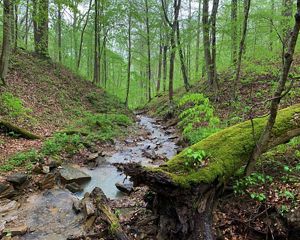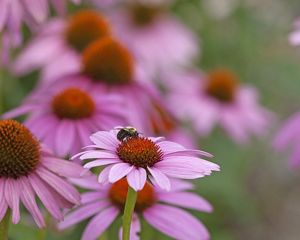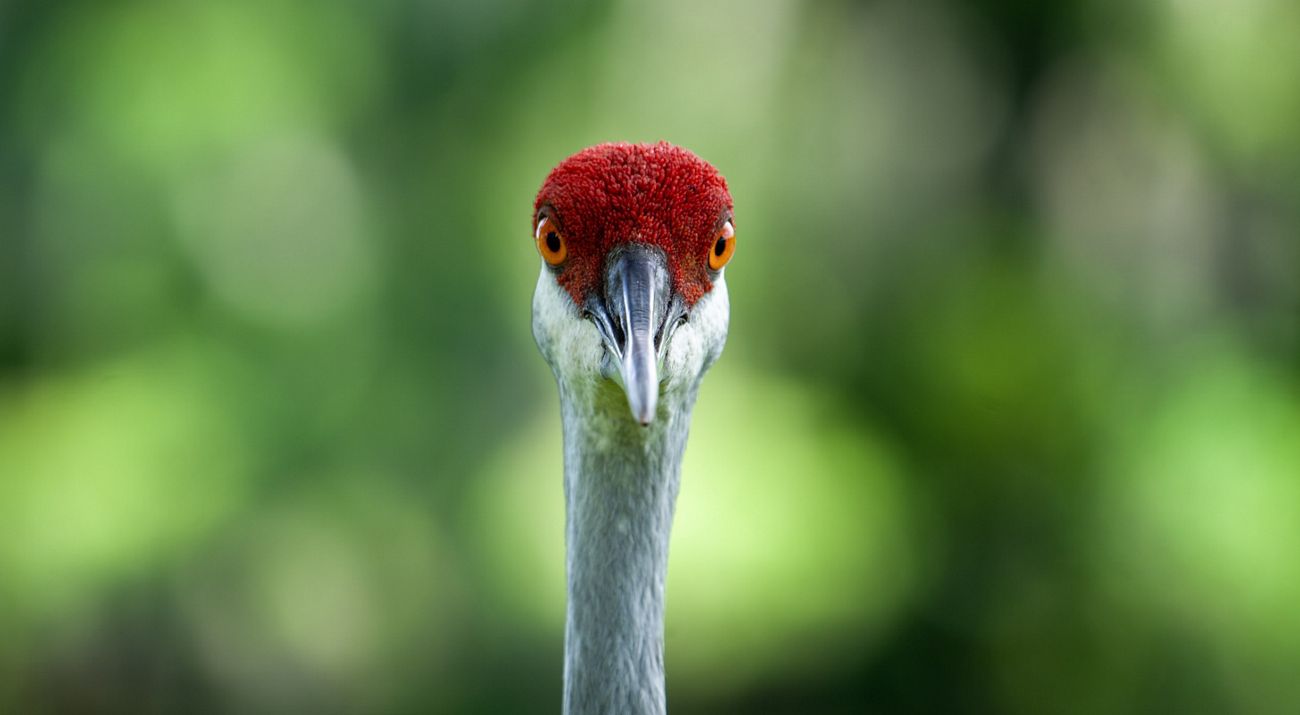
10 Endangered Species Crucial to Ohio’s Biodiversity
A diversity of wildlife supports lives and livelihoods across our state—here’s how we're ensuring it thrives for generations to come.
Safeguarding Biodiversity in Ohio
From wetlands and rivers to forests and prairies, Ohio is rich with natural areas and habitats that support a wide range of plants and wildlife. But development and changes in land use have fragmented many natural areas, reducing their ability to support biodiversity.
Loss of biodiversity, or the variety of life on Earth, is among the top threats to nature and people. One-third of America’s wildlife species are at risk of extinction. More than 30% of America’s bird species need urgent conservation attention. Around 70% of North America’s mussels are imperiled or already extinct. Globally, more than 40% of insect species are declining and one-third are endangered. And around 25% of U.S. reptiles and amphibians are at risk of extinction. But there is hope.
By preserving, restoring and reconnecting valuable habitats, The Nature Conservancy is working to change the narrative. In Ohio, we’re researching some of our most imperiled species to better understand their populations while also protecting and restoring habitats to ensure that plants and wildlife can thrive.
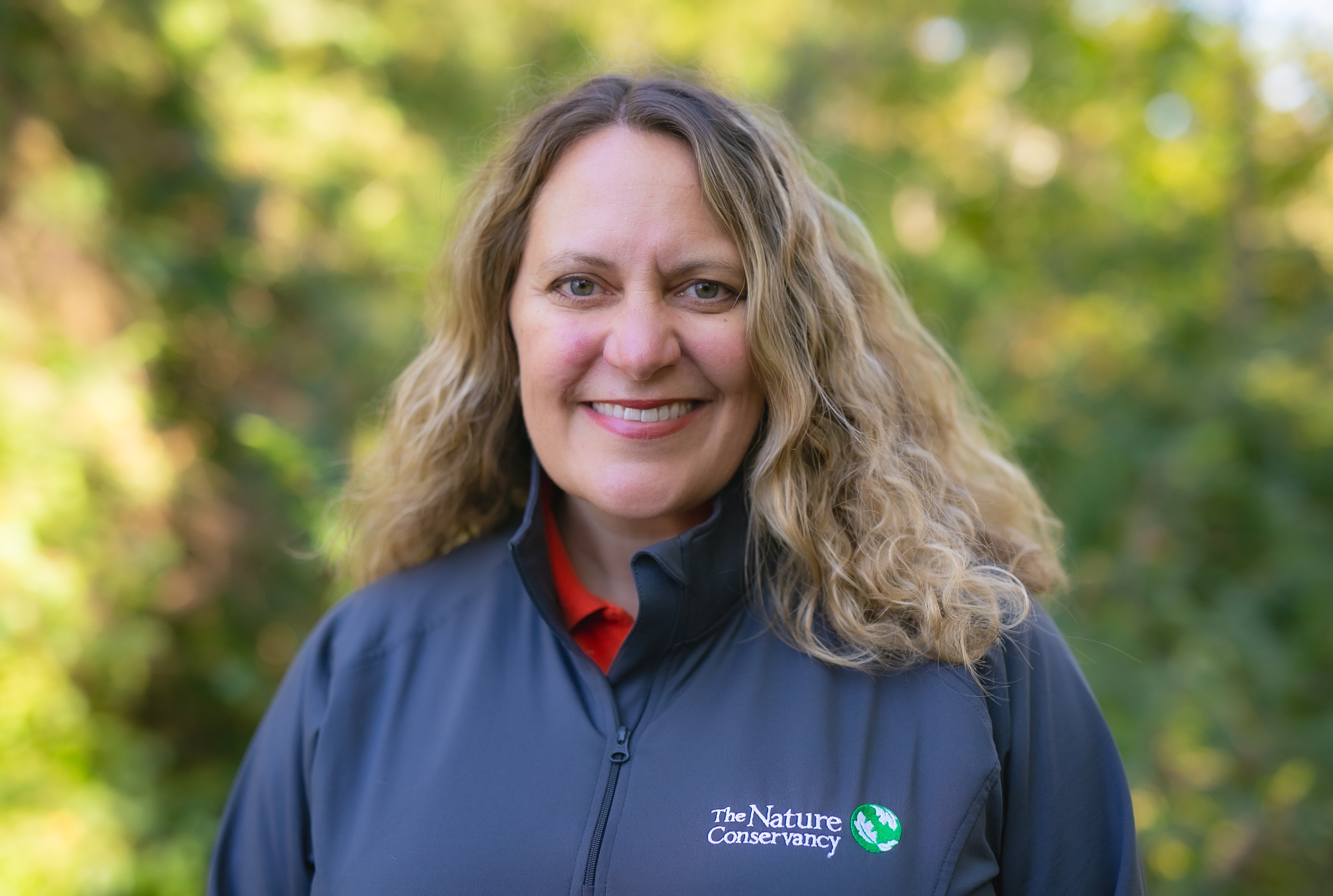
Why Biodiversity Matters
Biodiversity underpins the health of both human and natural systems worldwide. Even small shifts in the distribution and abundance of species caused by issues like climate change and habitat destruction or fragmentation, are enough to throw entire ecosystems out of balance, further threatening already vulnerable plants and animals.
We depend on nature now more than ever. Pollinators help pollinate the crops we rely on to feed a growing global population. Forests like those found at our Edge of Appalachia Preserve System provide critical carbon sequestration which helps offset carbon emissions that contribute to a warming climate. Wetlands like those found at our Morgan Swamp Preserve and our Lucia S. Nash Preserve help filter water for hundreds of thousands of residents in neighboring communities.
Habitats We're Protecting in Ohio
To support biodiversity in Ohio, we're protecting the habitats that our most vulnerable plants and animals need to thrive. From water filtration and carbon sequestration to recreational opportunities like birding, hiking and wildlife watching, our preserves also provide a multitude of benefits to people. Protecting these places is critical for all.
.JPG)
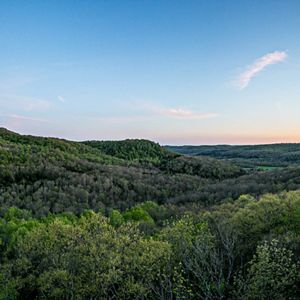
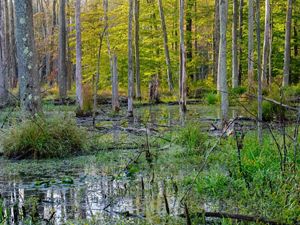
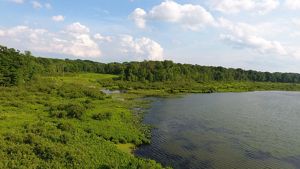
.JPG)
Kitty Todd: Each spring, the oak savannas of our Kitty Todd Nature Preserve light up with the brilliant blue-purple spikes of wild blue lupine flowers. © Randall L. Schieber

Edge of Appalachia: Forests like those at our Richard and Lucile Durrell Edge of Appalachia Preserve System are key to helping sequester carbon and mitigate the impacts of climate change © David Ike

Morgan Swamp: At over 2,000 acres, Morgan Swamp is one of the largest protected wetland communities in Ohio. © Kent Mason

Lucia S. Nash: Snow Lake © Snow Lake is one of the few remaining pristine ancient glacial kettle lakes in Ohio.
The United Nations’ Intergovernmental Science-Policy Platform on Biodiversity and Ecosystem Services (IPBES) recently reported that up to one million known species could disappear by 2050. But TNC is working alongside partners to change that trajectory.
As part of our goal to protect 30% of the planet by 2030, we're working to identify, preserve and restore our most vulnerable natural areas and the species they support. Through research, we're learning where endangered species exist in Ohio, what habitats they need to thrive and how to best support their survival.
Scope of Endangered and Threatened Species in Ohio
The Ohio Department of Natural Resources Division of Wildlife determines the list of state-listed wildlife species every five years. The Ohio Department of Natural Resources Division of Natural Areas and Preserves determines the list of Ohio endangered and threatened plants every 2 years.
Learn more about the categories of state-listed plant and wildlife species and the scope of biodiversity loss in Ohio.
Definition of Categories
-
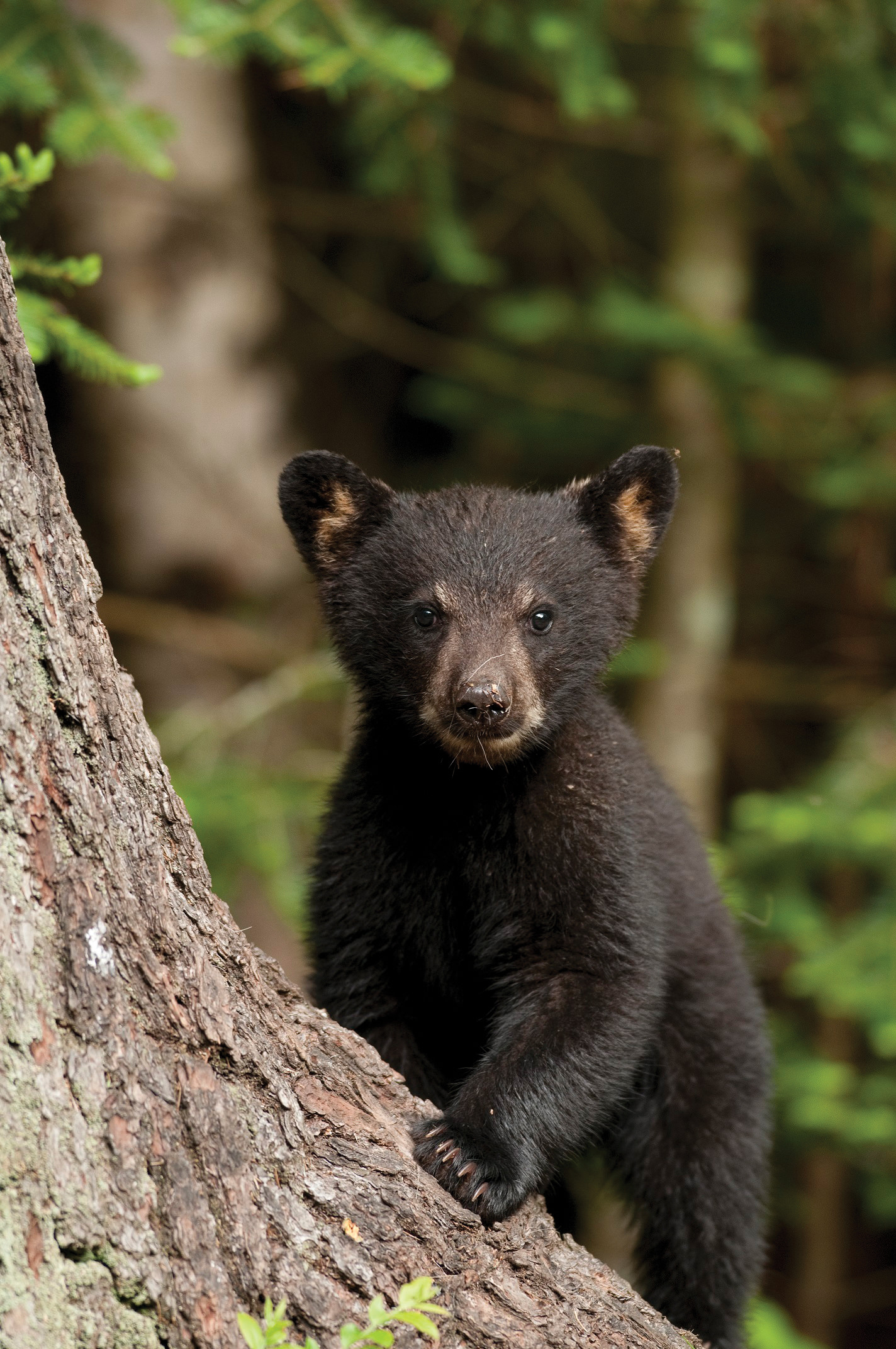
Endangered
An endangered species is a native species or subspecies that is threatened with extirpation from the state. There are 131 endangered species of wildlife and 271 endangered species of plants in Ohio.
-
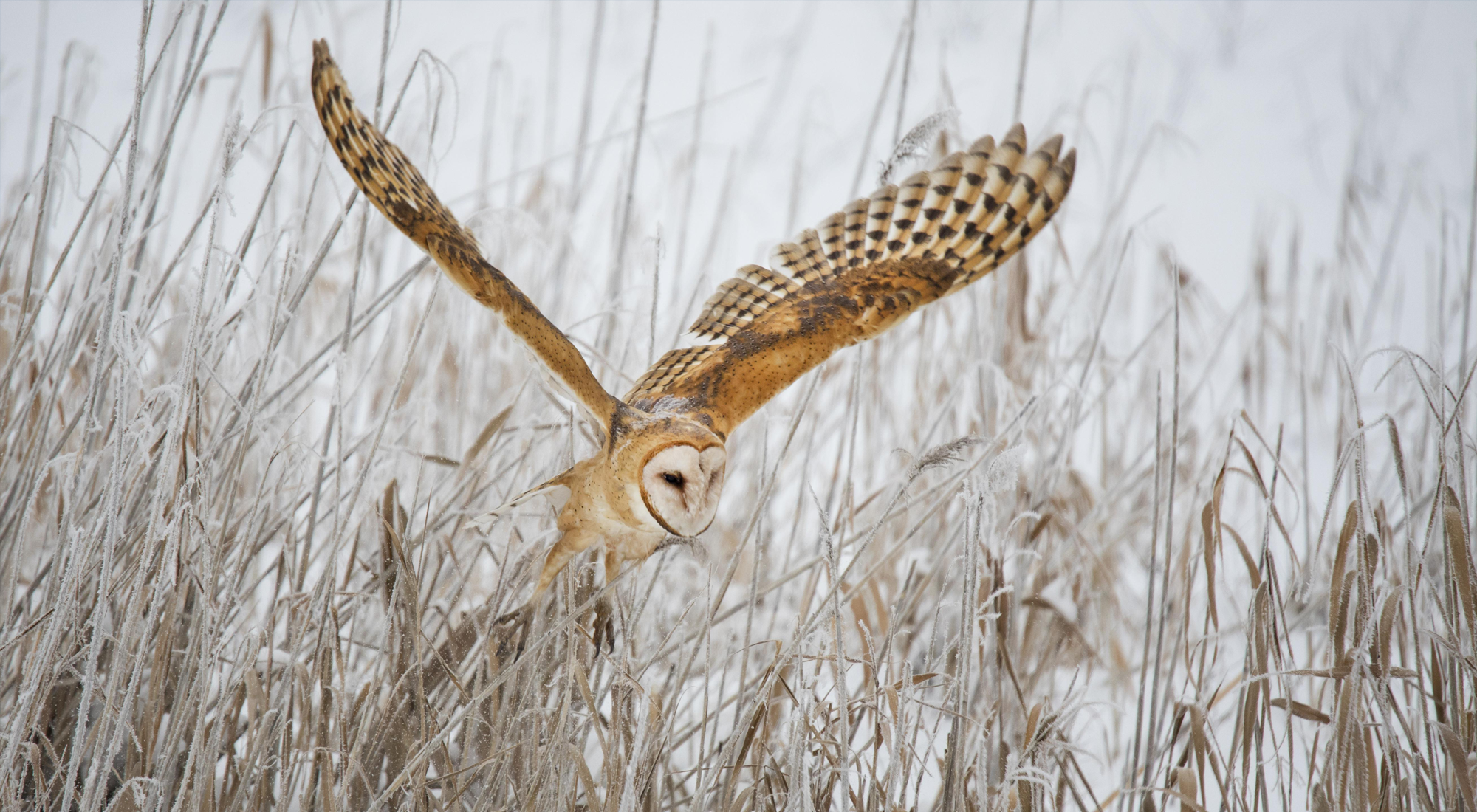
Threatened
A threatened species is a species or subspecies whose survival in Ohio is not in immediate jeopardy, but to which a threat exists. There are 46 threatened species of wildlife and 159 threatened species of plants in Ohio.
-
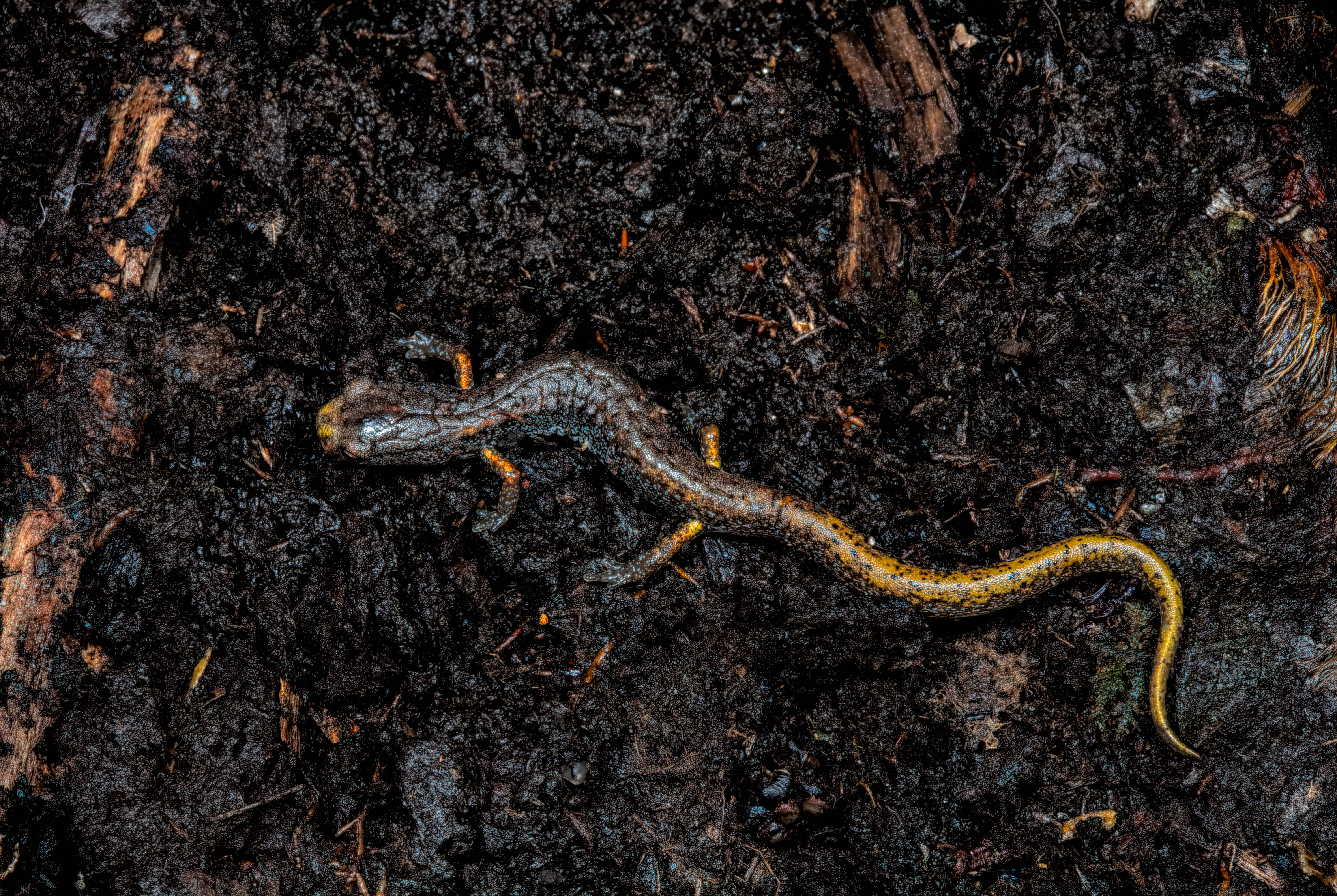
Species of Concern
A species of concern is a wildlife species or subspecies which might become threatened under continued or increased stress. There are 123 wildlife species of concern in Ohio.
-
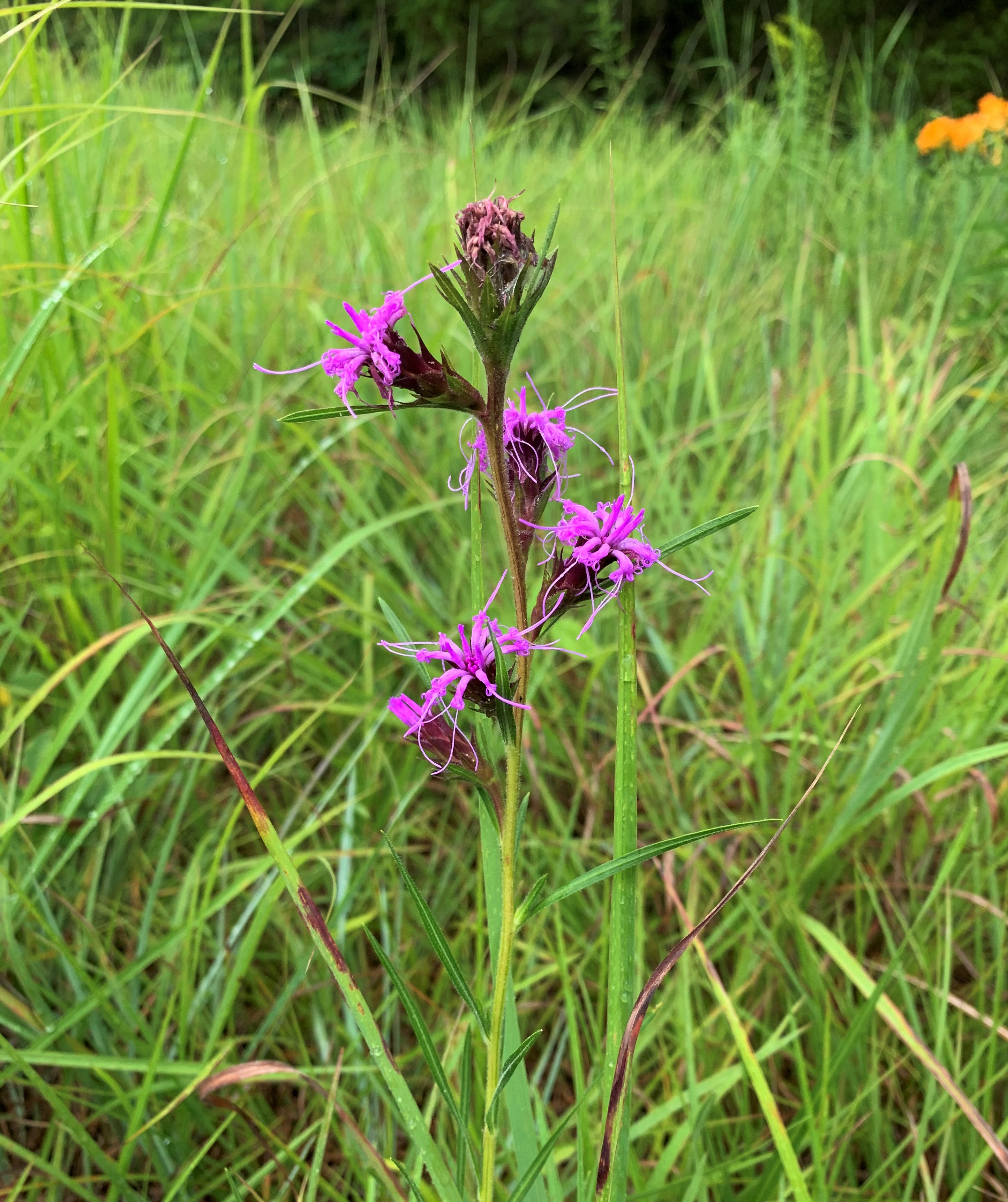
Potentially Threatened
A potentially threatened species is a plant species for which the natural populations are imperiled to the extent that it could become threatened within the foreseeable future. There are 92 potentially threatened plant species in Ohio.
Species We're Working to Protect in Ohio



Allegheny Woodrat (Neotoma magister)
Endangered in Ohio
The Allegheny woodrat is a small brownish-gray rat that lives in rocky areas around mountain ridges and cliffs. The species is noctural, spending nights foraging for food and nesting materials. The only remaining populations in Ohio occur in Adams County at our Edge of Appalachia Preserve System and adjoining properties. The woodrat has been state-listed as endangered since 1974 and populations in the state have seen more rapid decline in recent years.
Reasons for the decline are not well understood, but a variety of factors are likely at play. Raccoon roundworm (Baylisascaris procyonis), which the woodrats pick up when scavenging for seeds in raccoon scat, is almost always fatal to the packrat. Other factors include loss of important food sources to pest and disease.
After its accidental introduction into the United States in 1904, chestnut blight (Cryphonectria parasitica) killed nearly all mature American chestnut (Castanea dentata) trees in Ohio. More recently, spongy moth (Lymantria dispar) infestations have caused declines in acorn availability due to their preference for attacking oak trees. Shifts in food availability have created chain-reaction effects that have left wildlife that depend on those food sources vulnerable.
Why There's Hope
Research on woodrats in Ohio has been ongoing since the 1970s and has helped identify locations where woodrats occur and document historical locations that may no longer support populations of the mammal.
Current research efforts involving our Allegheny woodrats in Ohio continue to build on our knowledge of where woodrat populations exist, what threats may be affecting them and learning about their genetic diversity. In this effort, TNC staff and volunteers are assisting researchers in surveying for woodrat populations throughout the Edge of Appalachia Preserve and adjoining privately owned land.
Surveys include inspecting habitat to determine if the sites are infected with raccoon roundworm. Lab analysis of collected scat can help determine the incidence of the parasite and inform the Ohio Division of Wildlife where to disperse baits that de-worm the raccoons, ultimately killing the parasite and helping the woodrats.
TNC and Cincinnati Museum Center staff are also surveying woodrat populations through live capturing and ear tagging as well as genetic testing which has shown that localized populations are inbred, a factor that further threatens the future of the endangered mammal in Ohio. To diversify the genetic pool, Ohio Division of Wildlife and partnering organizations are collaborating on an interstate effort to bring new populations of woodrat to Ohio while relocating some of our local population to neighboring states.


Karner Blue Butterfly (Lycaeides melissa samuelis)
Federally Endangered
The Karner blue is a small butterfly, averaging around one inch in wingspan. Males’ wings are silvery blue to dark blue across the top with narrow black margins while females are grayish brown with bands of orange inside the blade border.
Found around the Great Lakes and the northeast United States, the Karner blue butterfly typically inhabits semi-shaded areas with sandy soil. The endangered butterfly is an insect specialist whose larvae feed exclusively on wild lupine. Unfortunately, as wild lupine populations in Ohio and the Midwest have declined so too have populations of the Karner blue butterfly, leading to the species being listed as federally endangered in 1992.
Why There's Hope
More than 20 years ago, TNC began helping Karner blue butterfly populations reclaim areas where it was previously extirpated. In 1998, the Kitty Todd Preserve was selected as the first location for the reintroduction of the Karner blue butterfly. Kitty Todd Preserve is located in the globally unique region of the Oak Openings which contains prime habitat for the species.
Eight species of butterflies are listed as endangered in Ohio. Four of these are only found in the Oak Openings region. Programs to re-establish stands of blue lupine have been successful in helping bring back the Karner blue, Persius duskywing and frosted elfin butterflies. TNC continues to grow the preserve while restoring the critical habitats found in the Oak Openings Region.


Green Salamander (Aneides aeneus)
Endangered in Ohio
Green salamanders are about 3-5 inches long with green and black mottling which helps to camouflage them. The secretive species stays hidden during the day, contributing to infrequent sightings and the hope that more populations exist than have been seen. Green salamanders are likely more habitat-specific than other Ohio salamander species, reinforcing the importance of protecting areas like our Edge of Appalachia Preserve, which is home to the salamanders' preferred rocky habitat.
Today, populations of this species are limited to only a few counties in southeastern Ohio near the Ohio River inlcuding Adams, Scioto and Lawrence. Threats to the species include habitat destruction due to aggressive logging around rocky outcrops and development of these lands.
Why There's Hope
TNC continues to restore and protect habitat that green salamanders need to thrive. In early 2022, we added over 200 acres to the Edge of Appalachia Preserve System, which builds on existing habitat we've protected in this important natural area. By growing the total acreage of protected land here and reconnecting fragmented habitats, we can ensure green salamanders can once again thrive.


Indiana Bat (Myotis sodalis)
Federally Endangered
Indiana bats migrate to caves for hibernation in the winter. In Ohio, this is primarily in southern counties. During the summer months, the endangered bats migrate out to wooded areas. Females form maternity colonies of 100 or more bats under loose tree bark. Males generally roost alone or in smaller groups. They forage for food at the edges of forested areas.
Indiana bats have been federally endangered since 1967. Threats to the species include human disturbance to caves and habitat loss of summer roosting areas. Pesticide use has also reduced the number of insects available for food.
Why There's Hope
TNC has been working on mapping areas in Ohio to better locate habitats conducive to Indiana bats. TNC staff and partners have performed acoustic surveying using special equipment to verify mapping data. We were excited to find evidence of the Indiana bat and other woodland bat species at our Edge of Appalachia Preserve. Protecting and growing the preserve continues to be a priority in our efforts to protect quality habitat that can support winter and summer populations of Indiana bats and other bat species.

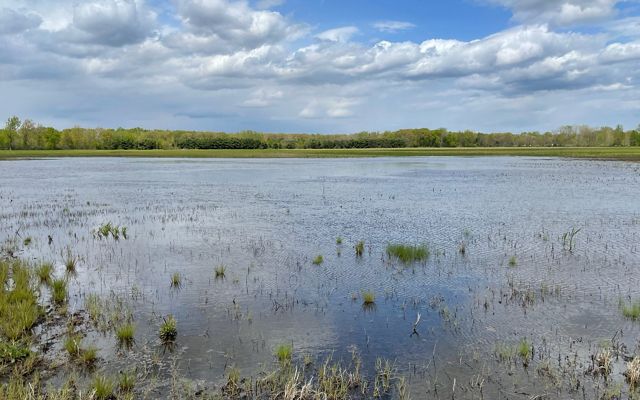
Sandhill Crane (Grus canadensis)
Threatened in Ohio
Sandhill cranes are large majestic birds that grow up to four feet tall and have a wingspan of six to seven feet. Brownish-gray feathers cover the birds except for a red patch at the top of their heads. Most often seen during courtship, sandhill cranes perform elaborate dancing rituals.
These large birds depend on large wetland areas for food and shelter and while abundant in some areas of the United States, they are threatened in Ohio due to lack of suitable habitat. Ohio has lost as much as 90% of its wetland habitat due largely to development in the state. Fortuantely, the tides are turning.
Why There's Hope
The number of breeding pairs of sandhill cranes in Ohio has been increasing slightly in recent years due to wetland conservation and restoration projects facilitated by TNC and other partners.
A pair of sandhill cranes has been seen using Snow Lake and surrounding wetlands at the Lucia S. Nash Preserve in northeast Ohio and TNC staff have spotted the birds at the newly restored Sandhill Crane Wetlands, part of the Kitty Todd Nature Preserve in northwest Ohio. We are optimistic that these areas will continue to support more breeding pairs of sandhill cranes in our efforts to restore their populations in the state.


Timber Rattlesnake (Crotalus horridus)
Endangered in Ohio
The timber rattlesnake is one of three venomous snakes in Ohio. The average size of these snakes is three to four feet long. They are beautiful creatures with dark and light brown bands running the length of the snake with a rattle at the very end of the tail. The head is triangular in shape and the eyes have a vertical pupil; both of which are characteristics that help identify it as venomous.
Though their historic range once included as many as 25 counties in Ohio, timber rattlesnakes are now known to occur in only a few pockets of 8 counties in the state. While the species has been hunted by humans, habitat loss and fragmentation are the primary causes of their decline.
Why There's Hope
In August 2019, TNC staff along with Cincinnati Museum Center staff successfully located a timber rattlesnake on protected land within the Edge of Appalachia Preserve System. During this survey effort, a timber rattlesnake was captured, tagged with a radio transmitter and released back to where it was originally located. This process has helped locate the hibernaculum where the local population of this endangered species spends the winter.
Placing cameras above known dens has helped inform which species, and how many, are using the site. Research has confirmed multiple new den sites and confirmed additional timber rattlesnakes entering and exiting some of these dens in spring and fall.
Through this research, we've learned that southern Ohio’s protected lands support a greater number of timber rattlesnakes than was originally known. As research continues, TNC staff and partners hope to better understand the density and range of these timber rattlesnake populations which will inform land protection efforts on priority acquisitions to support them.


Lark Sparrow (Chondestes grammacus)
Endangered in Ohio
Lark sparrows generally are only seen in Ohio during spring and summer when they are nesting and raising their young. They migrate to the southern United States and Mexico for the winter after their young have left the nest.
Lark sparrows exhibit several unique traits. The species is known to walk while it forages for food, unlike many other sparrows who prefer to hop. Lark sparrows also have longer tail feathers than most sparrows. Males will display their tail feathers in their efforts to court a female. If the female likes the male's display, she will give him a stick or twig to show that she has accepted his courtship. They build their nests low to the ground and have even been known to lay their eggs in and share the nests of other birds, such as thrashers or mockingbirds.
Lark sparrows have experienced decline largely due to habitat loss and fragmentation. Preferring to nest in open grassy habitats, the birds have been met with dwindling habitat in the eastern United States and parts of the Midwest, though their populations in the west remain common and widespread.
Why There's Hope
Lark sparrows are endangered in Ohio, but efforts in the Oak Openings region and our Kitty Todd Preserve to restore oak savanna habitats might help their numbers increase. Grassland habitat management practices like mowing and removal of woody invasive species are helping to improve habitat the lark sparrows need to thrive.
TNC staff are also leading the Green Ribbon Initiative which aims to educate and encourage landowners to manage their properties in ways that help these birds and the many other unique species of the region.


Massasauga Rattlesnake (Sistrurus catenatus)
Endangered in Ohio, Federally Threatened
Massasauga rattlesnakes are small gray or light brown snakes with heart-shaped heads and eyes with vertical pupils. Their color pattern is distinguished by the row of large dark brown blotches that run along the center of the back and rows of smaller brown blotches that run along the sides of the snake.
Massasauga rattlesnakes live in wet meadows which were historically maintained in Ohio by beaver activity that kept the meadows wet and open. But with beavers gone from the area today, the snake’s habitat is at risk of woody species overtaking the meadows.
Why There's Hope
The Massasauga rattlesnake is a focal point of recent conservation efforts at northeast Ohio’s Morgan Swamp Preserve. Thanks to a grant from the Great Lakes Fish and Wildlife Restoration Act Program, conservation staff are working to restore connectivity between early successional habitats that the reptiles need to thrive.
To help restore massasauga rattlesnake habitat in Ohio, TNC staff are resetting the clock on succession by cutting down trees in the meadows, removing invasive plants and planting native grasses on 400 acres in around the Morgan Swamp Preserve. These efforts will help restore connectivity to the genetically isolated populations of snakes caused by habitat fragmentation. Restoring habitat for the massasauga rattlesnake is expected to benefit other species as well including bobolink and sandhill cranes.


Henslow’s Sparrow (Centronyx henslowii)
Species of concern in the Midwest
The Henslow's sparrow is a small bird with the shortest call of any North American songbird. While its inconspicuous song might not draw a lot of attention, its distinctive olive-green nape, reddish-brown wings and sharp black streaks are something to admire.
The Henslow's sparrow has experienced declines due largely to loss of its native grassland habitat. Agriculture and land development have encroached on many of the grassland and prairie habitats where the species once thrived. But pockets of habitat remain and TNC is helping to ensure these birds can thrive once more.
Why There's Hope
In Ohio, populations of Henslow's sparrow are limited to the native grassland and prairie habitats within the Edge of Appalachia Preserve. While the preserve is largely forested, its embedded prairies and grasslands are an important part of TNC’s management goals for supporting greater species diversity.
Research shows that populations of grassland birds have seen significant decline in recent years due to habitat loss. But TNC and research partners from the Cincinnati Museum Center (CMC) are working to change that.
Using mist nests, researchers capture birds like the Henslow’s sparrow, eastern meadowlark and other grassland species in June and July after young have fledged. Captured birds are fitted with numbered bands to facilitate tracking of individuals from one year to the next.
Twenty bird species, including Henslow’s sparrows, were successfully netted and banded during the 2020 season. The 2021 results included a total of 12 bird species with a slight increase in the number of Henslow’s sparrows and some recapture of birds banded the previous year. These early results suggest that some grassland areas of the EOA preserve support healthy populations of Henslow’s sparrow and that current habitat management methods—which includes mowing the grasslands—is working. Research is planned to continue.


Painted Trillium (Trillium undulatum)
Endangered in Ohio
Endangered in Ohio, painted trillium is a treat for wildflower enthusiasts. The name trillium derives from the plant's three leaves and three petals, though four-petaled flowers are known to occur. At the center of its showy bloom, painted trillium appears to have been splashed with pink paint, giving the flower its name.
This species needs cool, moist, acidic soils in forested areas. Today, painted trillium is listed as endangered in Ohio and Michigan due largely to habitat loss caused by excessive logging and other artificial disturbances.
Why There's Hope
At more than 2,000 acres, Morgan Swamp Preserve in Ashtabula county is one of the largest privately protected forested wetlands in Ohio. This is perfect habitat for painted trillium and a rich diversity of many other plants and animals. The preserve is home to an abundance of wetlands including swamps, bogs, beaver ponds and vernal pools.
Today, the preserve boasts the largest population of painted trillium in the state. Staff at Morgan Swamp have constructed a deer exclusion fence around the populations of painted trillium at the preserve to prevent deer from browsing the rare plant. Each year, they also conduct a trillium count to determine population growth, which has greatly increased since management efforts began.
These wetlands are critical to the health of the state-designated “Wild and Scenic” Grand River that runs through the preserve and is an important tributary to Lake Erie, which is a source of drinking water for millions of people. Our work to protect and manage these lands is not only good for the painted trillium, but also good for people.
Help native species thrive.
Native plant and animal communities are in danger of habitat loss and degradation. Help us protect and restore these lands.
